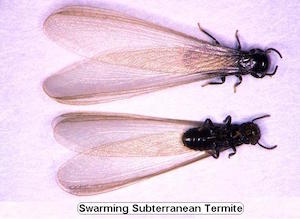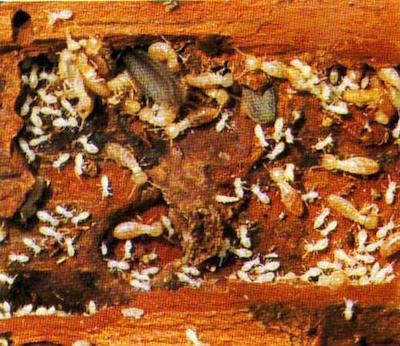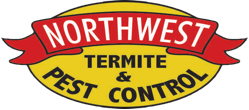Termite Inspection & Extermination
There are two main species of termites in Washington state: the subterranean termite and the dampwood termite. Termites feed on wood or wood products. Most termites need a moist environment (the soil or wet wood). If the termite colony is allowed to grow, they can produce great structural damage. Detecting termites can be challenging, but there are some signs that can give their presence away.
There’s a reason why we call ourselves Northwest Termite & Pest Control!
 Northwest Termite & Pest Control also services both residential and commercial customers for termite control. Our termite service consists of post-construction treatment, new construction treatment, addressing existing infestation, and spot or complete treatments.
Northwest Termite & Pest Control also services both residential and commercial customers for termite control. Our termite service consists of post-construction treatment, new construction treatment, addressing existing infestation, and spot or complete treatments.
For post-construction treatment, we offer both a traditional liquid and a bait/monitoring system. When using liquid treatment only, we treat the foundation of the home, all slabs touching the home, and all porches. However, we also offer a combination of both the liquid and the baiting system. Using both will help decrease your chances of having a termite problem in the future. The bait/monitoring system determines if the termites are present near the home. The termites feed on the bait/monitoring system and spread the bait to the other colony members. The traditional liquid system is used to create a barrier around the home which adds a secondary area of protection. The last option is the use of the baiting system only. We install monitors around the home and check them during quarterly service calls, refilling them as needed.
For new construction treatments we primarily use liquid. Using liquid allows us to put a protection barrier under the structure before it is actually built. After the structure is built, we return to apply a barrier around the finished structure. This is done after the structure has been completely built and landscaped.
Existing subterranean termite infestations usually require complete treatment of the soil under and around the entire structure, however sometimes a spot or localized treatment will succeed in elimination of the termites.
 Because of their wood-eating habits, termites can do great damage to buildings and other wooden structures. Their habit of remaining concealed often results in their presence being undetected until the timbers are severely damaged and start to exhibit visible surface changes. Once termites have entered a building they do not limit themselves to wood, they also damage paper, cloth, carpets, and other cellulosic materials. Often, particles taken from other soft materials (such as soft plastics, plaster, or rubber) may be used for construction.
Because of their wood-eating habits, termites can do great damage to buildings and other wooden structures. Their habit of remaining concealed often results in their presence being undetected until the timbers are severely damaged and start to exhibit visible surface changes. Once termites have entered a building they do not limit themselves to wood, they also damage paper, cloth, carpets, and other cellulosic materials. Often, particles taken from other soft materials (such as soft plastics, plaster, or rubber) may be used for construction.
Termites usually avoid exposure to unfavorable environmental conditions. They tend to remain hidden in tunnels in earth and wood. Where they do need to cross an impervious or inhospitable substrate, they cover their tracks with tubing made of feces, plant matter, and soil. Sometimes these shelter tubes will extend for many yards, such as up the outside of a tree, reaching from the soil to dead branches high above. Most termite barrier systems used for buildings aim to prevent concealed termite access, thus forcing them out into the open where they must form clearly visible shelter tubes to in order to gain entry.
